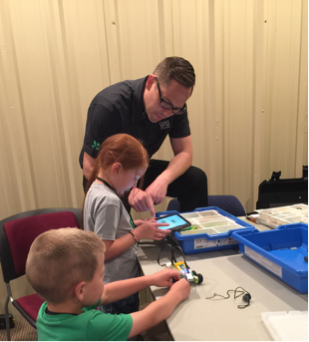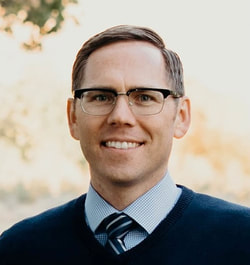|
This is the second blog post where I'll be sharing my contributions to the Extension Committee on Organization and Policy (ECOP) Innovation Task Force's writing assignments. In this writing assignment I try to answer the question: How do we promote innovation in Extension leadership? The Innovation Task Force is looking for ideas about how to encourage what we identified as the most important characteristics of innovation in existing leaders, what types and formats of training should be provided, what would the hiring process look like to bring in new leaders with innovative skill sets, how do we maintain a dedication to innovation from our leaders, etc. Please read over my response and leave a comment below with your thoughts, critiques and insights. I believe in working out loud, if you read this post please let me know what you think. 1. Change Reward Systems
Extension needs to change what it rewards. Why do we recognize people for years of service? Why don't we recognize people for failing, learning and quitting faster? For not wasting time and resources. In this podcast episode, Astro Teller, director of Alphabet's moonshot factory "X" tell the story of how he built a culture and system of innovation. 2. Rethink Innovation Grants The way internal grants are applied for and awarded needs to change. Why can't grant proposals be pitched to judges during a single or multi-day event like Startup Weekend? OSU Extension did this with “Innovate Extension” - Why can't we award funding as a team needs it? Why do we award more than $2000 to projects that haven't been validated or tested? 3. Hire for the Culture We Want to Have The process for hiring Extension professionals needs to change. If you were hiring a chef, you would ask them to cook a meal. Why do we ask easy-to-practice questions? Why not have our prospective Extension professionals do some of the actual work? During an interview, why not have the candidate facilitate a team-building activity or give a scholarly presentation. Why not give them a problem to solve like the "marshmallow challenge" and ask them a series of questions they won't know the answer to so you can see how they reason. We can’t keep hiring ‘people like us’ when we have the opportunity to hire people with the skills outlined by Chuck Hibbard in his presentation titled, The 21st Century Extension Professional. John Sullivan at SFSU provides excellent insight into job interviews. 4. Incorporate Sprints A “sprint" is a set amount of time in which a team works to finish a project (also known as hack-a-thons). Facebook hosts regular hack-a-thons to build prototypes of ideas. In fact, some of Facebook’s most successful products came out of hackathons: Timeline, chat, video, its mobile development framework and many other important internal tools and infrastructure. More details: 5. Hire “Change” Agents Businesses have Chief Innovation Officers, why can’t an LGU have a "Leader of Innovation and Change? OSU Extension has Jerry Thomas. Extension needs out-of-the-box thinkers that consistently challenge the status quo, frequently asking, “Why?” while also staying on the pulse of technology. LGU’s need a leader who can motivate Extension professionals and teach colleagues about cutting edge technology and how to apply it into their work. At USU Extension I was told this type of position existed but was cut a number of years ago...and we wonder why our employees are behind the times. 6. Encourage Unstructured “Free Time" to Ideate, Innovate Innovation needs time to develop. “Busy” is the buzzword at ever Extension meeting or conference. No one ever feels like they have time to spare. People get so consumed with putting out fires and chasing short-term targets that most can’t even think about the future. 3M and Google give their people 10-20% free time to experiment with new ideas. The software company Atlassian encourages employees to take "FedEx Days"—paid days off to work on any problem they want. But there’s a catch: Just like FedEx, they must deliver something of value 24 hours later. 7. Provide an Innovation Toolkit Adobe has the “Kickbox” and in Washington County, Utah we use a similar SeedBox toolkit to catalyze innovation in startups businesses. Extension professionals need self-serve ingredients for cooking up innovation. Promoting these types of toolkits will help convince Extension professionals that their leadership cares about their development while also promoting best/next practices that can be adapted to the needs of the individual or team. 8. Measure What We Want to Change Trucker said “What is measured improves,” or “You get what you measure.” There is no shortage of ideas in Extension. The challenge is turning them into something real, that delivers an impact. We need to figure out what to measure. I think client-oriented numbers are essential, and we need a database for reporting impacts. Once we can make report impacts across the system a standard practice we can promote metrics like:
1 Comment
|
Paul Hill, Ph.D.I design, plan, and evaluate economic development programs for Utah State University. Archives
September 2022
Search this site:
|


 RSS Feed
RSS Feed
